 0555-6768298
0555-6768298
 0555-6768298
0555-6768298
Jeśli masz pytania lub sugestie, zostaw nam wiadomość, a my odpowiemy tak szybko, jak to możliwe!
Skontaktuj się z nami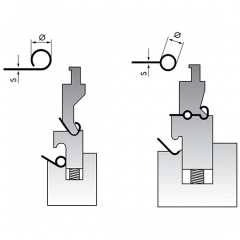
Zalety Produkcja w dwóch lub trzech skokach Redukcja śladów dzięki dociskowi sprężynowemu Aktywne komponenty są hartowane Wysoka powtarzalność dzięki zintegrowanemu zderzakowi Testowanie działania i regulacja poprzez zagięcia próbne - z arkuszami próbnymi Odpowiednie dla Grubość materiału do minimum 4,0 mm średnica wewnętrzna: 2,5 mm x grubość materiału dla stali i aluminium 3,0 mm x grubość materiału dla stali nierdzewnej
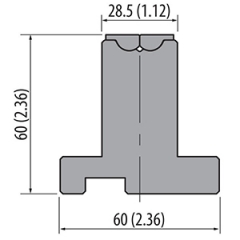
Prasa krawędziowa rolla-v matrycuje bez zarysowań, najlepiej przy zginaniu nałożyć folię na powierzchnię przedmiotu obrabianego. a my polecimy Ci odpowiedni rozmiar matrycy roll-v w zależności od wyginanej płyty.

Regulowane matryce typu Shim Regulowane dolne matryce można uznać za jeden z najbardziej wszechstronnych dodatków do prasy krawędziowej. Za pomocą tego typu narzędzia można rozmieścić otwory od 6,35 mm do 381 mm. Przekładki są dostarczane w celu wykonania wymaganego otworu. Szczelinowe elementy dystansowe umożliwiają łatwe wyjmowanie w celu zmiany otworu matrycy. Gdy nie są używane, elementy dystansowe są umieszczane po bokach bloku matrycy. Matryce te mogą być dostarczane w pełnych długościach lub podzielone na sekcje dla łatwiejszej obsługi.
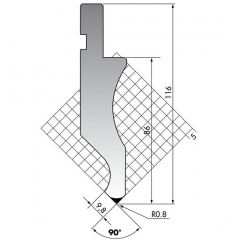
Prosty rozmiar ostrza: 835*146*26mm, 90 stopni. materiał to 42CrMo4, twardość to HRC47+/-3
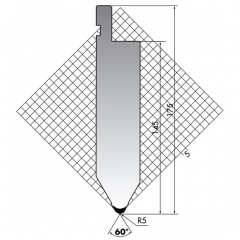
Prosty rozmiar ostrza: 835*175*40mm, 60 stopni. materiał to 42CrMo4, twardość to HRC47+/-3

Prosty rozmiar ostrza: 835*146*26mm, 90 stopni. materiał to 42CrMo4, twardość to HRC47+/-3
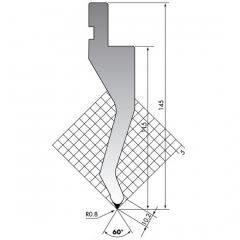
Prosty rozmiar ostrza: 835*145*32mm, 60 stopni. materiał to 42CrMo4, twardość to HRC47+/-3

Rozmiar dziurkacza na gęsiej szyi: 835*197*92mm, 88 stopni. materiał to 42CrMo4, twardość to HRC47+/-3. i wysokość 197mm, szerokość 92mm. mogą być wykonane zgodnie z życzeniem klienta.
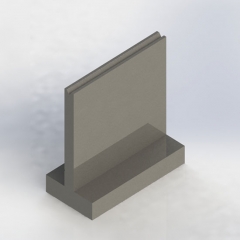
Rozmiar matrycy telewizyjnej: 835*120*60mm, V12,30 stopni. materiał to 42CrMo4, twardość to HRC52-58. i V6, V8, V10, V16, V20, V25 mogą być wykonane zgodnie z życzeniem klienta.
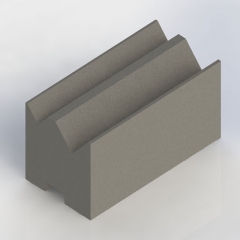
Samocentrujące matryce 2V, rozmiar to 835 * 46 * 50 mm, 88 stopni, waga to 17 kg. I możemy wykonać V5-V9, V8-V12, V12-V20, V16-V25 i inne otwory V zgodnie z grubością gięcia.
What is the best material for press brake tooling?
In the field of sheet metal fabrication, the material selection of press brake tools directly determines its wear resistance, service life, and forming accuracy. To ensure production efficiency and product quality, it is especially important to choose tooling materials scientifically. However, with so many material options available on the market, customers are often confused when making a decision. So, how can one choose the "best" tooling material? This article will explore the topic from four key perspectives.
Based on Sheet Material Type
Different sheet materials require different tooling materials. The most commonly used press brake Moulds materials on the market include 42CrMo, T8/T10, H13, and SKD11/D2. Among them, high-strength and tough alloy steels like 42CrMo are sufficient for most general bending tasks. However, for materials such as stainless steel, which have higher strength and springback, harder and more wear-resistant tooling materials like SKD11 or H13 are more suitable.
Based on production volume and usage frequency
For long-running production lines or high-frequency operations, it's wise to use more wear-resistant materials like H13 or SKD11. While these come at a higher upfront cost, they significantly reduce downtime and tooling replacement. For short runs or occasional use, 42CrMo offers a great balance of performance and affordability.
Based on precision requirements
High-precision sheet metal parts often require higher hardness and stability from the tooling. In such cases, it is recommended to use high-hardness materials like SKD11 to prevent deformation and maintain consistent bending angles over time. Tooling with lower hardness is more likely to wear out or deform with prolonged use, which can negatively impact product accuracy.
Based on Cost
In general, high-quality tooling materials tend to be more expensive, but they offer a longer service life and require less maintenance. In the long run, despite the higher initial investment, the overall cost of use is actually lower. For customers who prioritize efficiency and stability, choosing high-grade materials is a wise investment.
In conclusion, there is no single standard answer when it comes to selecting press brake tooling materials. The right choice should be based on a comprehensive evaluation of material type, production goals, quality requirements, and budget.
At Golin, we are committed to using high-quality materials such as 42CrMo and SKD11, combined with advanced heat treatment processes to ensure our tools are both strong and durable. We also offer customized material and hardness options tailored to our customers' specific bending needs.If you have any further questions or would like to learn more, feel free to contact us anytime!
 online
online 0555-6768298
0555-6768298 0555-6769126
0555-6769126 sales2@cngolin.cn
sales2@cngolin.cn +86 18251802252
+86 18251802252